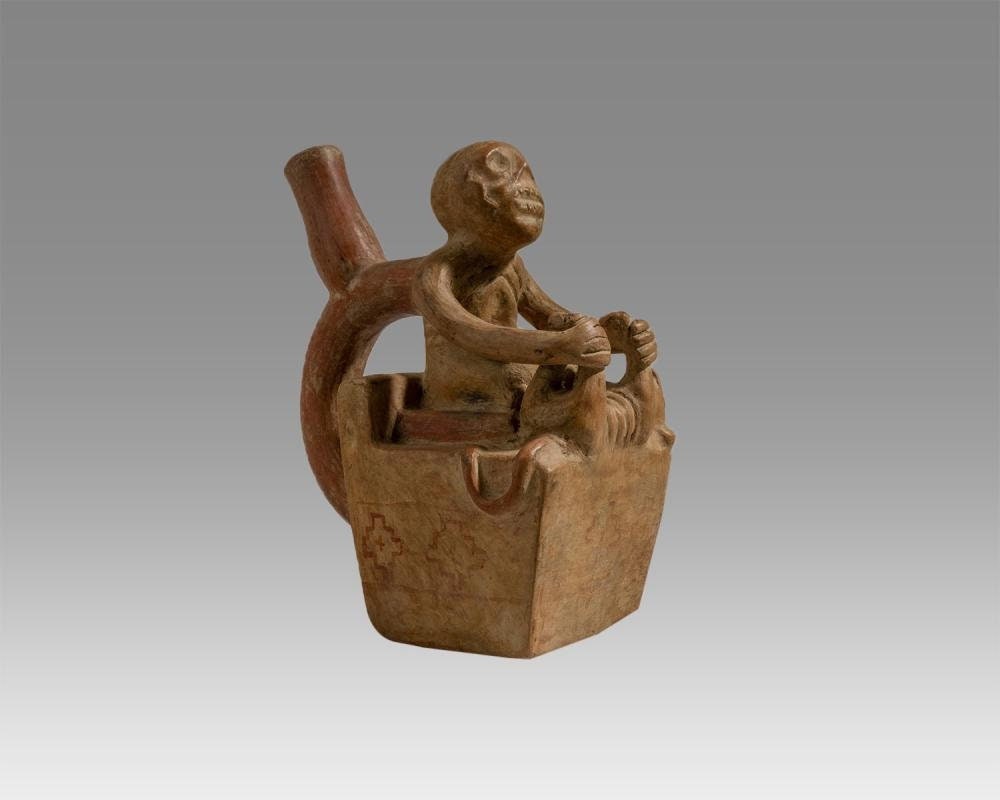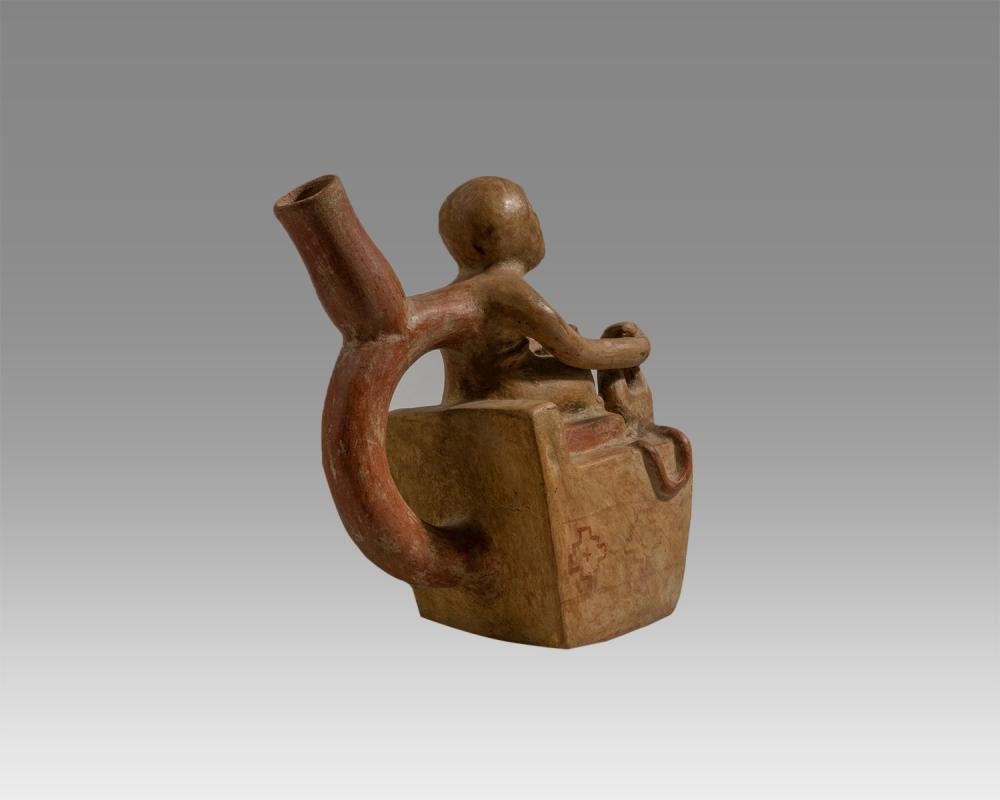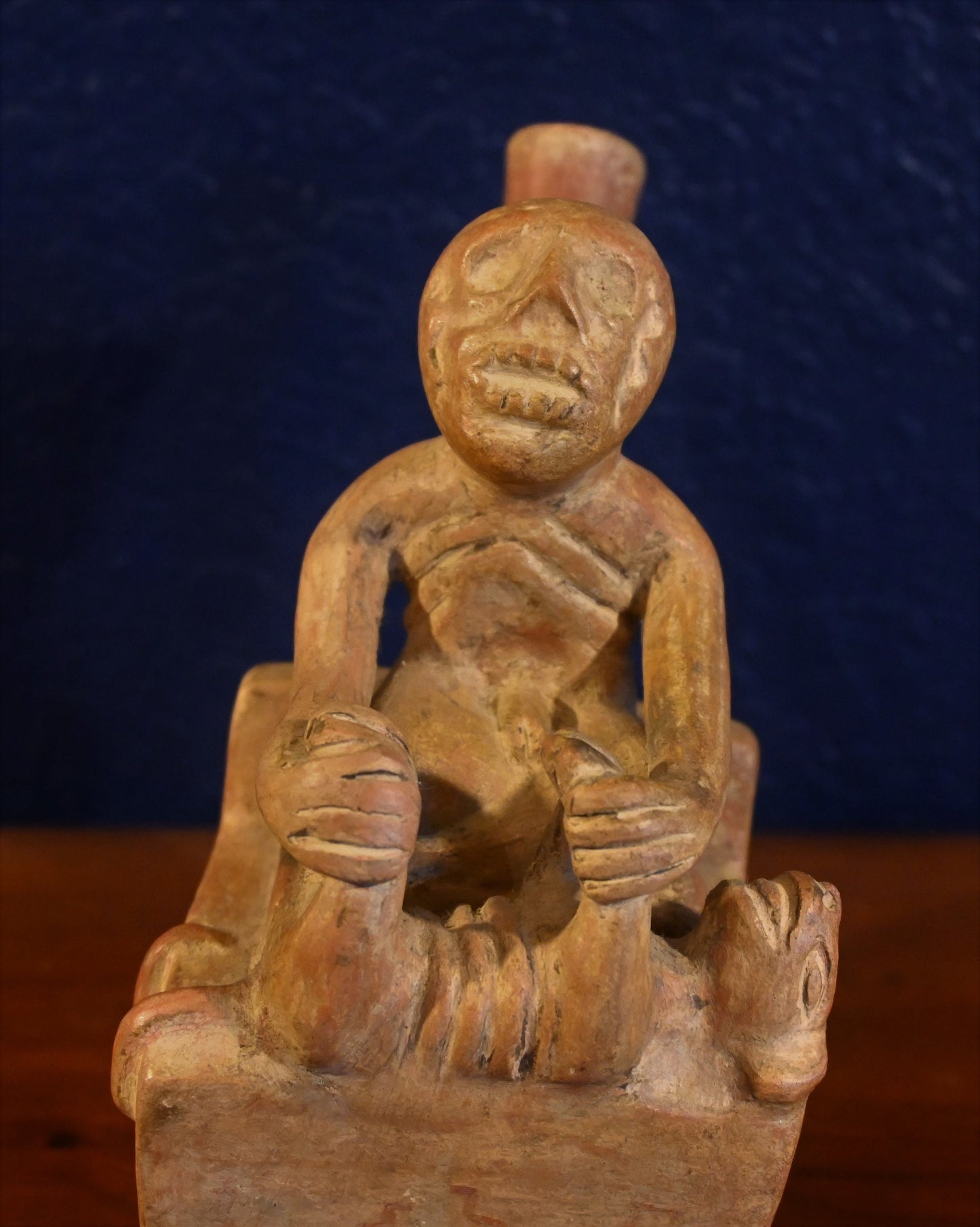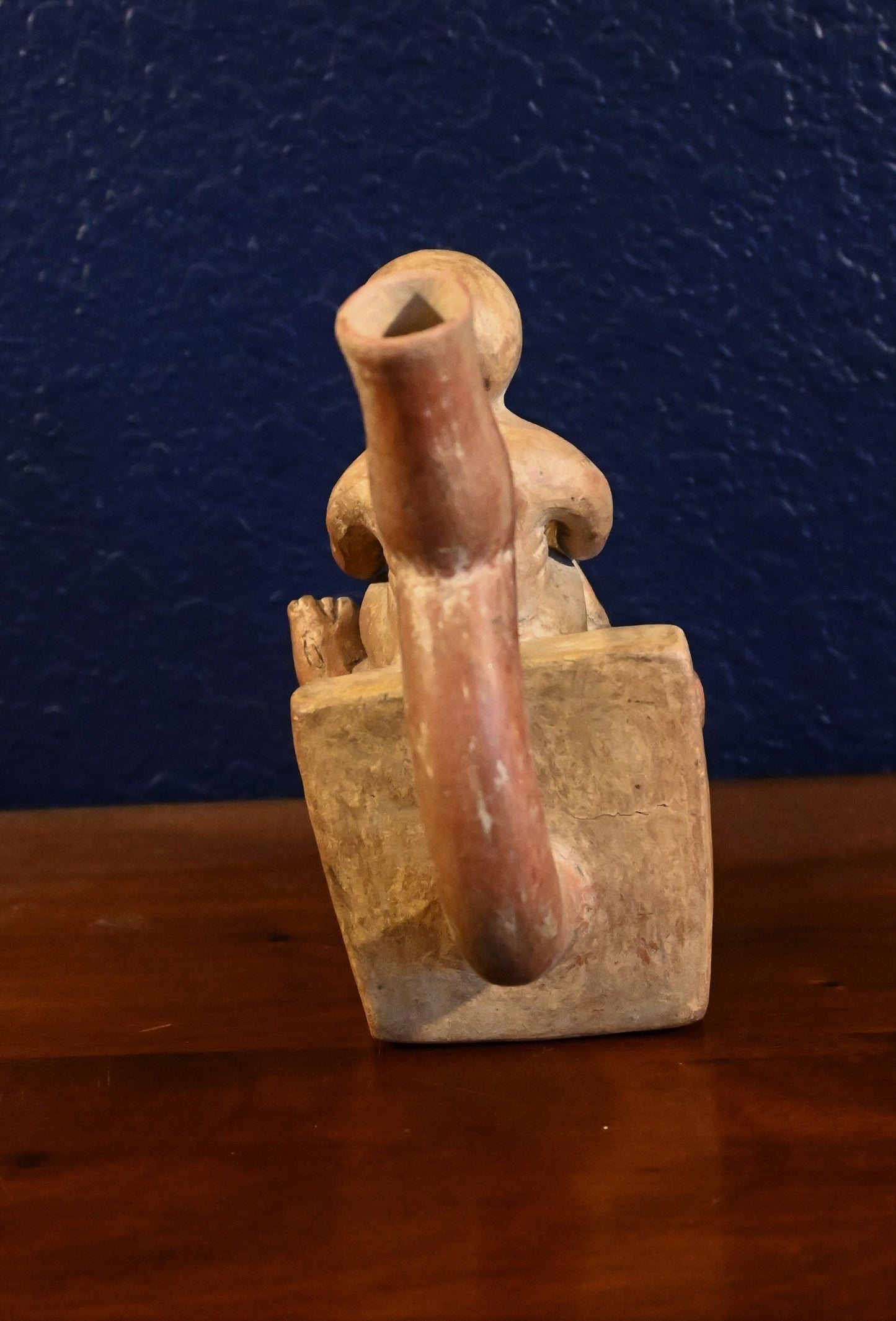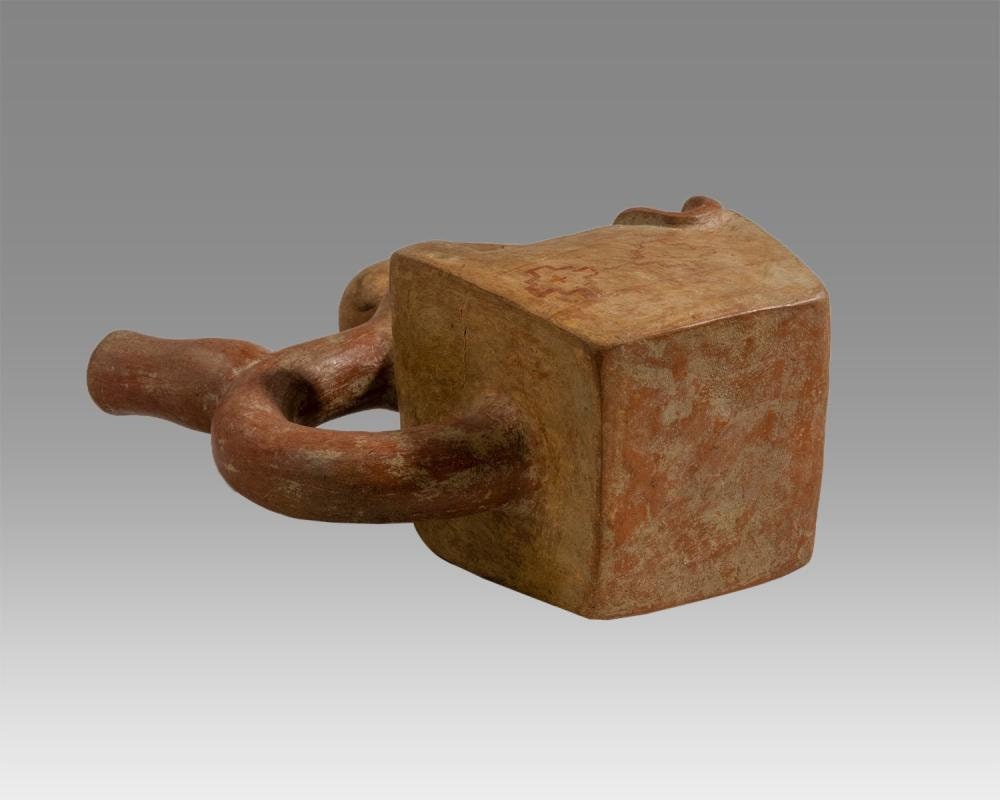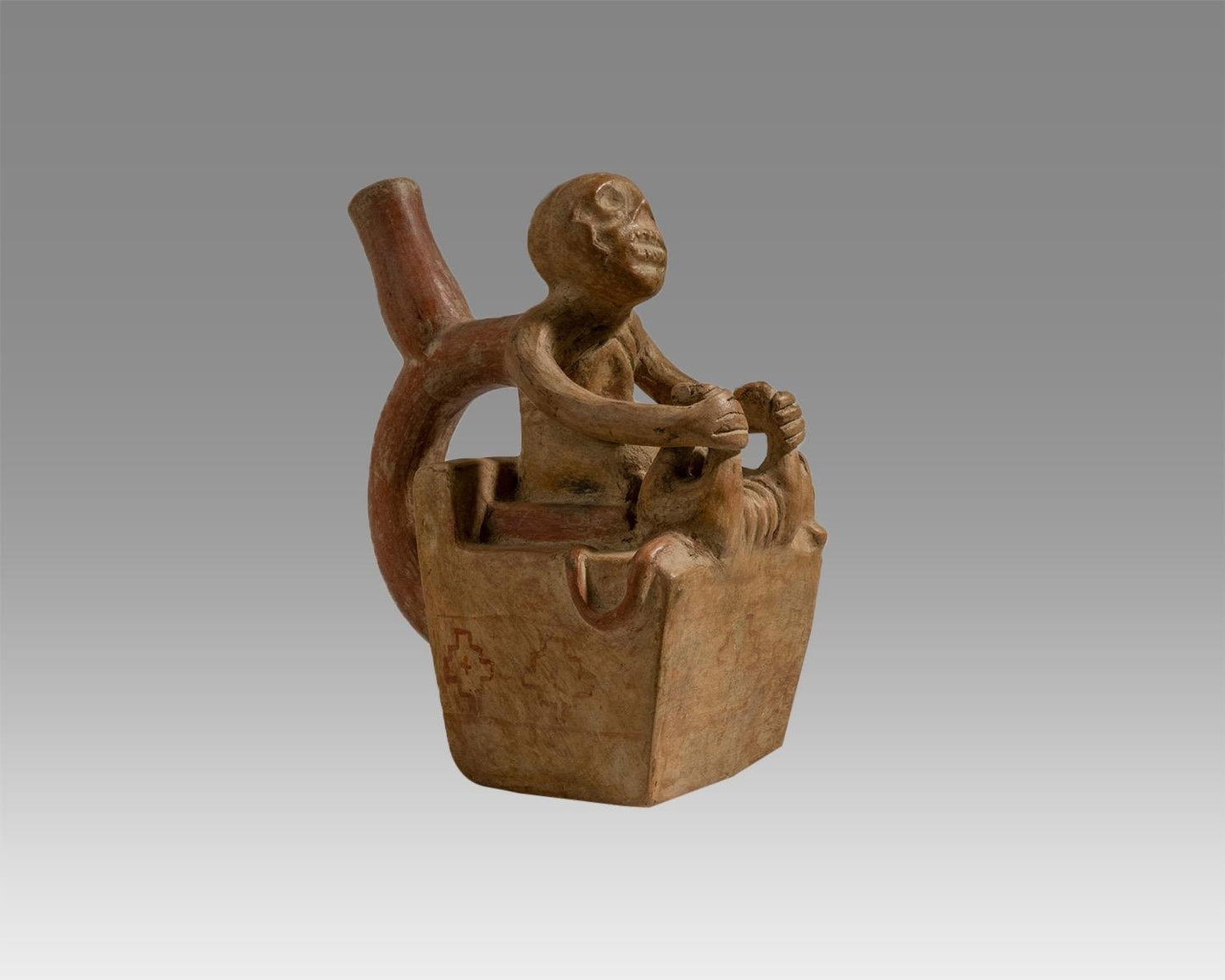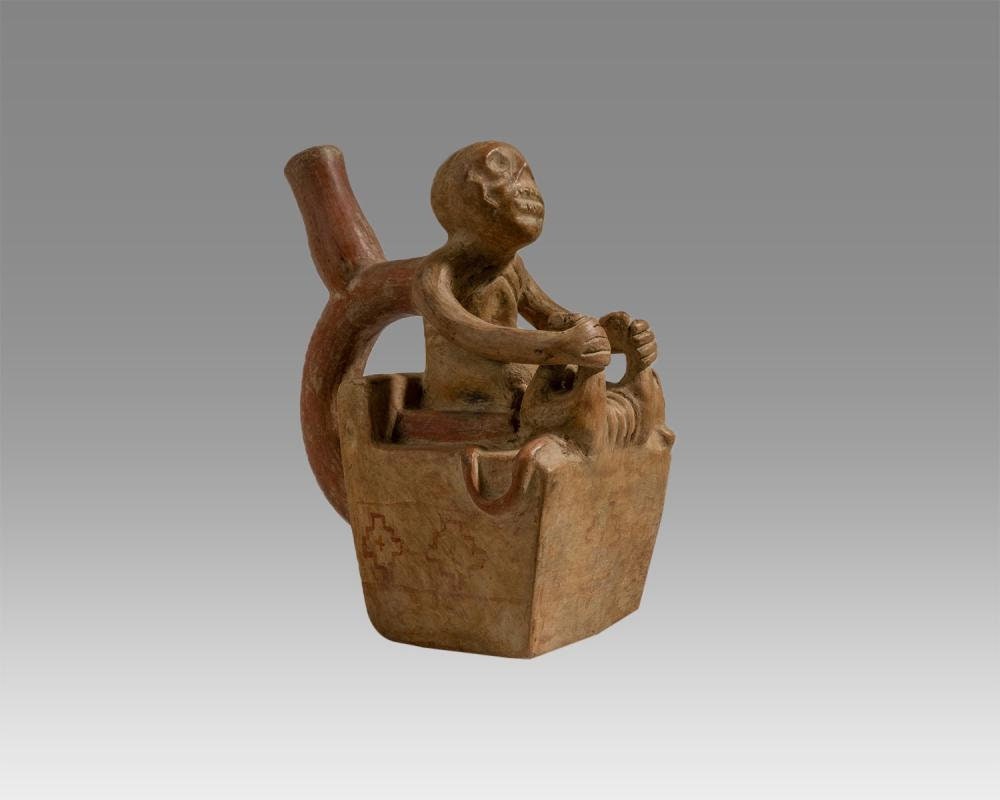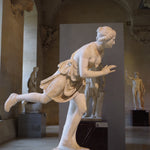Global Antiques and Fine Art
Authentic Pre-Columbian Moche 'Sacrifice Scene' Pottery Stirrup ca. 500-800CE (AD) with COA & Provenance skeletal warrior with bound animal
Regular price
$1,749.00 USD
Regular price
Sale price
$1,749.00 USD
Unit price
per
Couldn't load pickup availability
Authentic Pre-Columbian Artifact from the Northern Coast of Peru. Artifact highlights moving sacrificial scene depicting a skeletal warrior with bound animal. This stirrup-jar vessel from the Moche (Mochica) Culture dates from phase IV (Late Intermediate Period) circa 500-800 CE. Shown in relief, skeletal warrior grabs bound animal on alter. Vessel in reddish-brown ground with painted cream. Artifact shows all appropriate patina and aging and nice mineral deposits for a piece this age.
Size: 7 3/4 inches (19.68 cm) in Height by 6 1/2 inches (16.51 cm) Deep
Condition:
No repairs or damage noted- Nice mineral deposits on surface with wear to the original pigment.
Provenance: Comes Certificate of Authenticity- Further-Purchased from Palmyra Heritage Gallery New York, NY -prior -Private SW USA collection, acquired over 30 years ago.
Released from private collection that has sold in New York City galleries as well as top auction-Guaranteed Authentic
All items legal to buy/sell under U.S. Statute covering cultural patrimony Code 2600, CHAPTER 14, and are guaranteed to be as described or your money back.
Free domestic shipping!
Returns & exchanges
Refunds and Exchanges
We accept returns within 30 days of the purchase of the item. However, the buyer is responsible for shipping the item back to us and that cost will not be refunded. We will refund your money for the item as soon as we receive the item back. Please send the item back to us with tracking or insured.
Moche ceramics (from Met Museum):
Moche decorated vessels were mold-made and, despite their diversity, reveal standardized shapes and decoration. Nine basic shapes are reported in the literature. Stirrup-spout bottles (1992.60.9) and flaring bowls (63.226.5) are the privileged supports on which artists expressed figurative, complex painted scenes. Other shapes are neck and neckless jars (1983.546.6), dippers (64.228.15), bowls, neck bowls, cups, and crucibles.
Moche ceramic art represents an infinite variety of subjects. Common zoomorphic figures include camelids, deer, felines, foxes, rodents, monkeys, bats, sea lions, as well as a wide array of birds, fish, shells, arachnids, and reptiles. These animals are represented realistically, hybridized, or anthropomorphized (82.1.29). Corn, squash, tubers, and beans are common among a great diversity of plants. Among human and anthropomorphic figures, rulers, warriors, prisoners, priests, healers, and fanged deities are recognizable, as well as deformed and skeletal individuals (1978.412.196). Historical individuals are also represented in realistic, three-dimensional portrait vessels (64.228.21). While animals are often anthropomorphized or hybridized, humans often have supernatural attributes (1978.412.70).
All these figures are either represented alone or interacting in a variety of actions in diverse narrative scenes. Although the possibilities of creating different scenes from all existing Moche figures are almost limitless, major trends can be recognized in narrative art and representations are limited to a small number of recurring and interrelated themes. For example, deer and seal hunts (1978.412.69), sacrifice ceremonies, warriors in battle or moving in processions (67.167.1), and messengers running in line (67.167.3) are common themes in Moche ceramic art.
